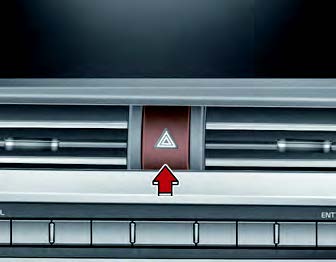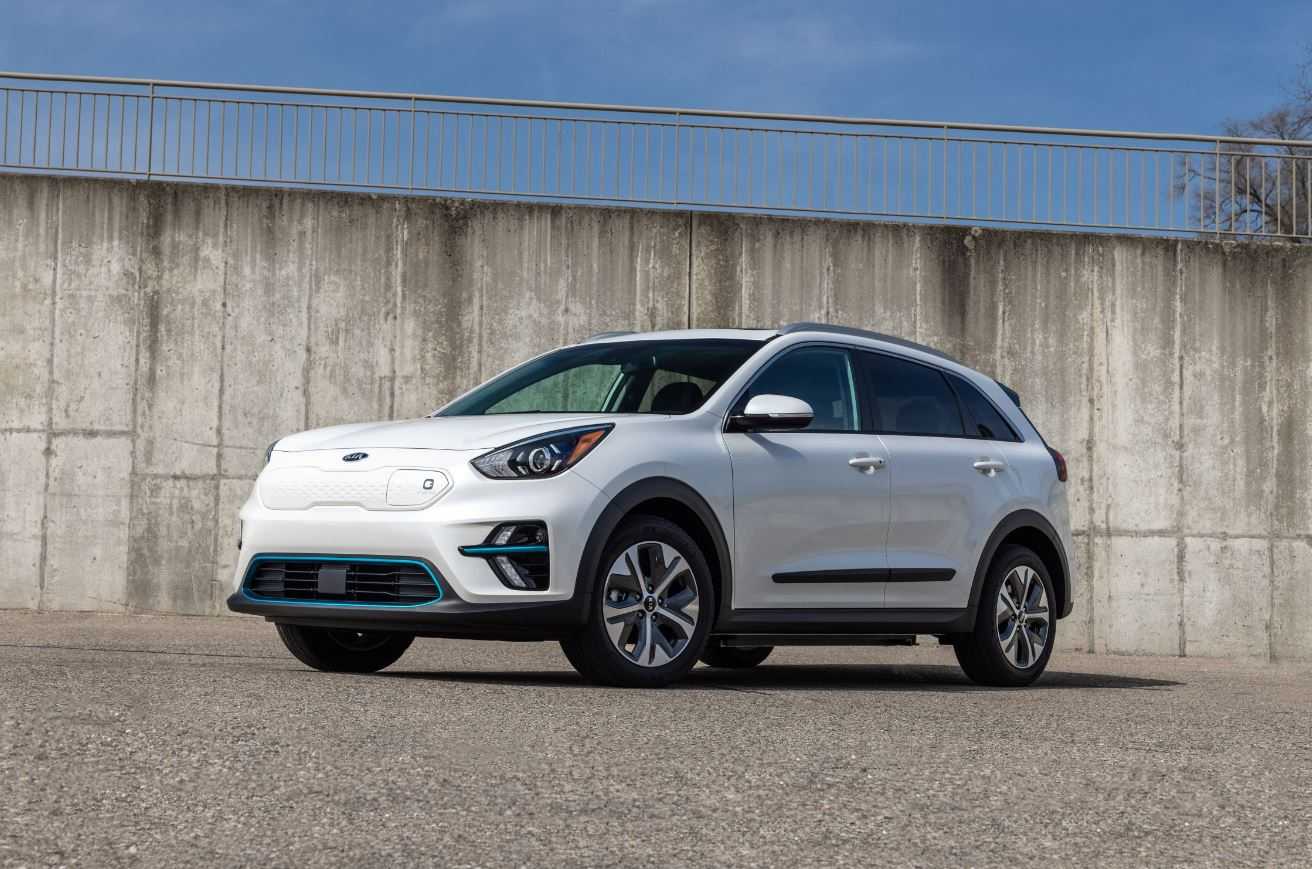2021 Kia Niro EV Emergency Conditions User Manual
This tutorial covers the 2021 Kia Niro EV’s emergency features. These safety features help drivers and passengers avoid accidents by controlling unexpected events like rapid braking or loss of control.
2024 Kia Niro EV Specs, Price, Features, Mileage and Review
What to Do in an Emergency
Road warning
When an emergency situation occurs while driving or when you park by the edge of the roadway, you must alert approaching or passing vehicles to be careful as they pass. For this, you should use the hazard warning flasher.
Hazard warning flasher
The hazard warning flasher serves as a warning to other drivers to exercise extreme caution when approaching, overtaking, or passing your vehicle.

It should be used whenever emergency repairs are being made or when the vehicle is stopped near the edge of a roadway.
Depress the flasher switch with the POWER button in any position. The flasher switch is located in the center facia panel. All turn signal lights will flash simultaneously.
The hazard warning flasher operates whether your vehicle is running or not.
The turn signals do not work when the hazard flasher is on.
Care must be taken when using the hazard warning flasher while the vehicle is being towed.
IN CASE OF AN EMERGENCY WHILE DRIVING
If the engine stalls at a cross-road or crossing
If the engine stalls at a crossroad or crossing, set the shift lever in the N (Neutral) position and then push the vehicle to a safe place.
If you have a flat tire while driving
- Reduce your speed gradually, keeping a straight line.
- Move cautiously off the road to a safe place.
- Turn on your hazard warning flasher.
- Try to start the vehicle again. If your vehicle will not start, contact an authorized Kia dealer or seek other qualified assistance.
If the Vehicle Stalls at a crossroad or crossing
- If safe to do so, shift to the N (Neutral) position.
- Push the vehicle to a safe location.
If you have a flat tire while driving
- Take your foot off the accelerator pedal and let the vehicle slow down while driving straight ahead.
NOTICE
If there was a check engine light and loss of power or stall and if safe to do so wait at least 10 seconds to restart the vehicle after it stalls. This may reset the car so it will no longer run at low power (limp home) condition.
WARNING
Do not apply the brakes immediately to slow down the vehicle
- Use the paddle shifter (left side lever) to increase regenerative braking control.
- Do not or attempt to pull off the road as this may cause loss of vehicle control resulting in an accident.
- When the vehicle has slowed to such a speed that it is safe to do so, brake carefully and pull off the road.
- Drive off the road as far as possible and park on firm, level ground.
WARNING
If you are on a divided highway, do not park in the median area between the two traffic lanes.
- When the vehicle is stopped, press the hazard warning flasher but-ton, shift to P (Park), apply the parking brake, and place the POWER button in the OFF position.
- Have all passengers get out of the vehicle. Be sure they all get out on the side of the vehicle that is away from traffic.
- Follow the instructions provided later in this chapter.
If the vehicle will not start 12V battery
The vehicle may not start if the battery level is low.
Check the battery level by performing the following procedure.
- Be sure the shifter dial is in P (Park). The vehicle starts only when the shifter dial is in P (Park).
- Check the 12-volt battery connections to be sure they are clean and tight.
- Turn on the interior light. If the light dims or goes out when you operate the starter, the battery is drained.
WARNING
Do not push or pull the vehicle to start it. This could cause damage to your vehicle and/or to your body.
Emergency (Engine and Tires)
- If your vehicle has an automatic transmission, be sure the shift lever is in N (Neutral) or P (Park) and the emergency brake is set.
- Check the battery connections to be sure they are clean and tight.
- Turn on the interior light. If the light dims or goes out when you operate the starter, the battery is discharged.
- Check the starter connections to be sure they are securely tightened.
- Do not push or pull the vehicle to start it. See instructions for “Jump starting”.
WARNING
Push / Pull start
Do not push or pull the vehicle to start it. Push or pull starting may cause the catalytic converter to overload and create a fire hazard.
If engine turns over normally but does not start
- Check the fuel level.
- With the ignition switch in the LOCK position, check all connectors at the ignition coils and spark plugs. Reconnect any that may be disconnected or loose.
- Check the fuel line in the engine compartment.
- If the engine still does not start, call an authorized Kia dealer or seek other qualified assistance.
WARNING
Do not push or pull the vehicle to start it. This could cause damage to your vehicle and/or to your body.
EMERGENCY STARTING
When the vehicle will not start 12V battery because of low battery power, you may need to jump start the vehicle.
Jump starting
Connect cables in numerical order and disconnect in reverse order.
Jump starting can be dangerous if done incorrectly. Therefore, to avoid harm to yourself or damage to your vehicle or battery, follow these jump starting procedures. If in doubt, we strongly recommend that you have a competent technician or towing service jump start your vehicle.
WARNING
Battery
Never attempt to check the electrolyte level of the battery as this may cause the battery to rupture or explode.
WARNING
Frozen batteries
Do not attempt to jump start the vehicle if the discharged battery is frozen or if the electrolyte level is low as the battery may rupture or explode.
WARNING
Electrolyte
- Do not charge or discharge the battery arbitrarily. It may lead to fault, electric shock or burns.
- Do not damage the battery in such ways as to drop, deform, impact, out or spear with a sharp object. It may cause electrolyte leakage or fire.
- Breakdown of the battery may lead to electrolyte leakage or flammable gas generation. Con-tact an authorized Kia dealer immediately.
- If electrolyte leaks out, avoid contact with eyes, skin or clothes. In event of accident, flush with water and get medical help immediately.
- Do not place the battery near open flame or incinerate. It may lead to fire or explosion.
Keep out of reach of children or animals.
Keep the battery away from moisture of liquid. Do not touch or use if liquids have been spilled on.
WARNING
Battery cables
Do not connect the jumper cable from the negative terminal of the booster battery to the negative terminal of the discharged battery, directly. This can cause the dis-charged battery to overheat, crack, and degrade.
Connect the jumper cable from the negative terminal of the booster battery to the chassis ground in the motor room.
WARNING
Sulfuric acid risk
When jump starting your vehicle be careful not to get acid on yourself, your clothing or on the vehicle. Automobile batteries contain sulfuric acid. This is poisonous and highly corrosive.
WARNING
Battery
Keep all flames or sparks away from the battery. The battery produces hydrogen gas which will explode if exposed to flame or sparks.
Jump starting procedure
- Make sure the booster battery is12-volt and that its negative terminal is grounded.
- If the booster battery is in another vehicle, do not allow the vehicles to come in contact.
- Turn off all unnecessary electrical loads.
- Connect the jumper cables in the exact sequence shown in the illustration. First connect one end of a jumper cable to the positive terminal of the discharged battery (1), then connect the other end to the positive terminal of the booster battery (2).
- Start vehicle with the booster battery and let it run, then start the vehicle with the discharged battery.
If the cause of your battery discharging is not apparent, you should have your vehicle checked by an authorized Kia dealer.
NOTICE
Make sure to connect one end of the jumper cable to the negative terminal of the booster battery, and the other end to a metallic point, far away from the battery.
Push-starting
Your vehicle equipped with reduction gear should not be push-started.
WARNING
Tow starting vehicle
Never tow a vehicle to start it. When the vehicle starts, the vehicle can suddenly surge forward and could cause a collision with the tow vehicle.
WARNING
Battery cables
Do not connect the jumper cable from the negative terminal of the booster battery to the negative terminal of the discharged battery. This can cause the discharged battery to overheat and crack, releasing battery acid.
Make sure to connect one end of the jumper cable to the negative terminal of the booster battery, and the other end to a metallic point, far away from the battery.
- Start the engine of the vehicle with the booster battery and let it run at 2,000 rpm, then start the engine of the vehicle with the discharged battery.
If the cause of your battery discharging is not apparent, you should have your vehicle checked by an authorized Kia dealer.
Push-starting
Your vehicle equipped with reduction gear should not be push-started.
WARNING
Tow starting vehicle
Never tow a vehicle to start it. When the vehicle starts, the vehicle can suddenly surge forward and could cause a collision with the tow vehicle.
Useful Links
View Full PDF: 2021 Kia Niro EV Owner’s Manual | Auto User Guide


